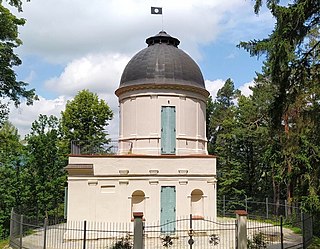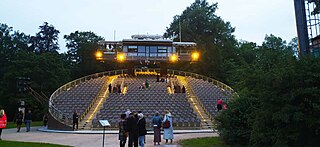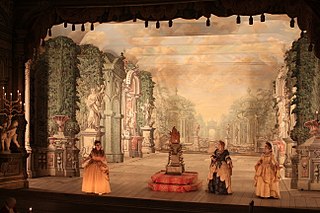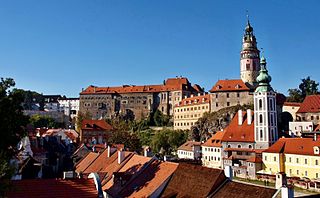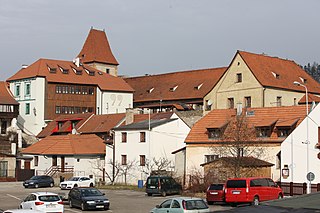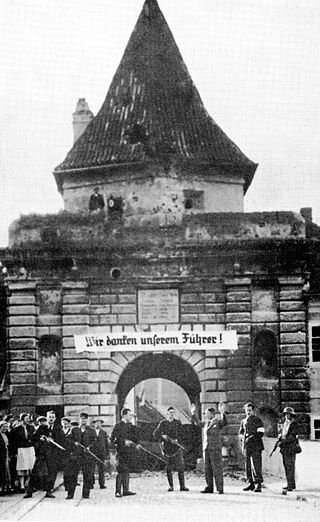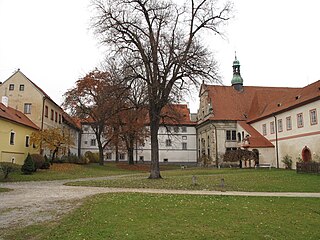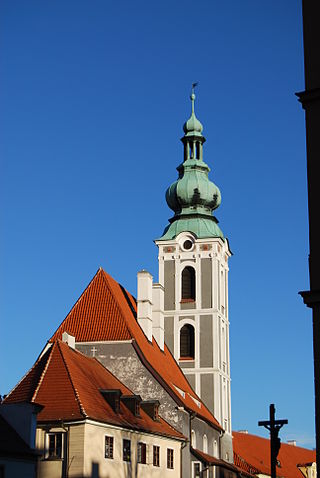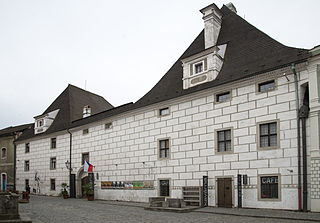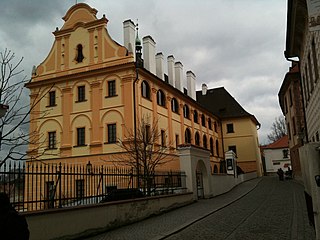Self-guided Sightseeing Tour #1 in Český Krumlov, Czechia
Legend
Tour Facts
4.1 km
229 m
Experience Český Krumlov in Czechia in a whole new way with our free self-guided sightseeing tour. This site not only offers you practical information and insider tips, but also a rich variety of activities and sights you shouldn't miss. Whether you love art and culture, want to explore historical sites or simply want to experience the vibrant atmosphere of a lively city - you'll find everything you need for your personal adventure here.
Activities in Český KrumlovIndividual Sights in Český KrumlovSight 1: Památník vítězství Ptačí hrádek
The Memorial of Karel Filip of Schwarzenberg, also called the Bird Castle, is an unfinished Classicist memorial situated to the west of the Český Krumlov State Castle and Chateau. It is an immovable cultural monument.
Sight 2: Otáčivé hlediště
The Revolving Auditorium in Český Krumlov is an originally designed auditorium of an open-air theatre, one of several well-known revolving auditoriums, located in the garden of the Český Krumlov Castle. Its history dates back to 1958, when it was promoted in the Czech Republic by the naturalized stage designer of Latvian origin Joan Brehms (1907–1995) together with the then director of the South Bohemian Theatre, Otto Haas. Since its inception, the Revolving Auditorium has been operated by the South Bohemian Theatre based in České Budějovice. It is the most visited Czech open-air theatre.
Sight 3: Zámecké barokní divadlo
The Baroque Castle Theatre in Český Krumlov is a part of the Český Krumlov Castle, with whose main buildings it is connected by the Cloak Bridge. With its furnishings and the state of preservation of the original Baroque theatre, it is the leading monument of its kind on a global scale. The theater and its equipment, as well as the entire chateau, are protected as a national cultural monument.
Wikipedia: Zámecké barokní divadlo v Českém Krumlově (CS), Website
Sight 4: Castle and Chateau Český Krumlov
Český Krumlov Castle is a castle in Český Krumlov in the South Bohemian Region of the Czech Republic. It dates back to 1253 when the first castle was built by the Vítkovci family, the main branch of the powerful Bohemian family Rosenberg.
Sight 5: Špitál svaté Alžběty
In the Middle Ages, the Hospital of St. Elisabeth in Český Krumlov was a complex of interconnected burgher houses Latrán No. 105, Věžní No. 99, 100, 101, 102, 103 and the Budějovice Gate. The northern wall is part of the city fortifications. The complex is registered as a UNESCO World Heritage Site within the historic center of Český Krumlov and is a protected monument.
Sight 6: Budějovická brána
The fighting in Český Krumlov took place in this South Bohemian town between 30 September and 3 October 1938, when Czechoslovak citizens, authorities and soldiers were attacked by Nazi militants who were trying to take control of the town before the official date of the evacuation of the town by the Czechoslovak armed forces.
Sight 7: Tramín
Traminer is the name of a space in Latrán in Český Krumlov. On one side it is surrounded by the Minorite monastery with the Church of Corpus Christi, on the other side it is surrounded by the houses of Latránská, Klášterní and Formanská streets.
Sight 8: sv. Jošta
The former church and hospital of St. Jošt in Český Krumlov is a building originally from the Gothic period, later rebuilt in the Renaissance and Baroque styles. It is located at Latrán 6. The church is no longer used for spiritual purposes and the building houses a marionette museum.
Sight 9: Český Krumlov
Get Ticket*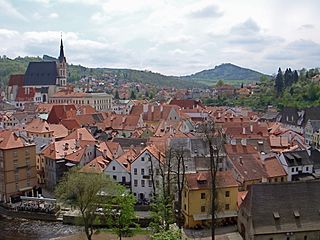
Český Krumlov is a town in the South Bohemian Region of the Czech Republic. It has about 13,000 inhabitants. It is known as a tourist centre, which is among the most visited places in the country. The historic centre with the Český Krumlov Castle complex is protected by law as an urban monument reservation, and since 1992, it has been a designated UNESCO World Heritage Site because of its well-preserved Gothic, Renaissance and Baroque architecture.
Sight 10: Městský pivovar
The Town Brewery is a Renaissance building of a former brewery, founded by the municipality, located in Široká Street in Český Krumlov. The building consists of two houses. Široká No. 70 and 71. The second building was created by the Renaissance reconstruction of medieval houses in 1578–1605 according to the design of the Italian architect Domenico Benedetto Cometa of Eckthurm. The builder was Hans Haas. The building under descriptive number 70 was then connected after the reconstruction of another house in 1875–1876 and served as a refrigerator. The building was rebuilt in the 70s of the 19th century and other buildings in Hradební Street were added to it. In the 90s of the 20th century, reconstruction took place.
Sight 11: Historic Centre of Český Krumlov

Český Krumlov is a town in the South Bohemian Region of the Czech Republic. It has about 13,000 inhabitants. It is known as a tourist centre, which is among the most visited places in the country. The historic centre with the Český Krumlov Castle complex is protected by law as an urban monument reservation, and since 1992, it has been a designated UNESCO World Heritage Site because of its well-preserved Gothic, Renaissance and Baroque architecture.
Sight 12: Regional Museum in Český Krumlov
The Regional Museum in Český Krumlov is a museum in Český Krumlov that presents visitors with the history of the town and the region. It is located in the building of the former Baroque Jesuit seminary.
Wikipedia: Regionální muzeum v Českém Krumlově (CS), Website
Share
How likely are you to recommend us?
Disclaimer Please be aware of your surroundings and do not enter private property. We are not liable for any damages that occur during the tours.
GPX-Download For navigation apps and GPS devices you can download the tour as a GPX file.
